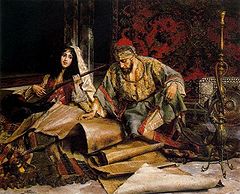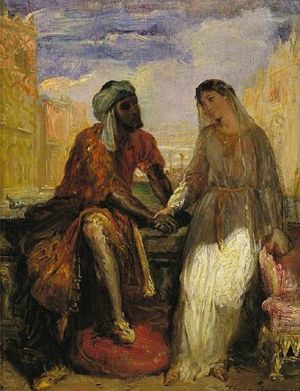Difference between revisions of "Romanticism"
(→Key Artists) |
(→Key Artists) |
||
| Line 14: | Line 14: | ||
==Key Artists== | ==Key Artists== | ||
| − | [[File:Loutherbourg The Falls of the Rhine at Schaffhausen 1788.jpg|thumb|330px|Philippe Jacques De Loutherbourg, The Falls of the Rhine at Schaffhausen, 1788.]] | + | [[File:Loutherbourg The Falls of the Rhine at Schaffhausen 1788.jpg|thumb|330px|[[Philippe De Loutherbourg|Philippe Jacques De Loutherbourg]], The Falls of the Rhine at Schaffhausen, 1788.]] |
*[[William Blake]] | *[[William Blake]] | ||
*[[Henry Fuseli]] | *[[Henry Fuseli]] | ||
Revision as of 14:17, March 3, 2014

Romanticism was a major artistic, musical and literary movement in the 1800s which emphasized expressed thoughts, feelings, and nature. The Romantic period of art was also a period of rebirth for religious philosophy.
The term "Romanticism" was coined because it originated in European regions of the "Romance Languages", namely French, Spanish and Italian. German and British Romanticism followed soon after. Other countries such as America and Canada also had Romantic art movements. Romanticism is contrasted with Neo-Classicism, a movement that preceded it.
Delacroix (1798-1863) was for some the most important of the French Romantic painters.
Chassériau, Othello and Desdemona in Venice.
Key Artists

- William Blake
- Henry Fuseli
- Francisco de Goya
- Eugene Delacroix
- Theodore Chasseriau
- William Turner
- John Constable
- Philippe Jacques De Loutherbourg
Key Authors
In Literature
Literary romanticism was characterized by a series of details. It evoked the past heavily and put a great emphasis on women and children, mostly because of their purity. It wasn't associated to carnal love, as in lust, but a romantic love that was more idealistic than anything. Romanticism also had a strong nationalist sense, as can be found in Goethe's works.

